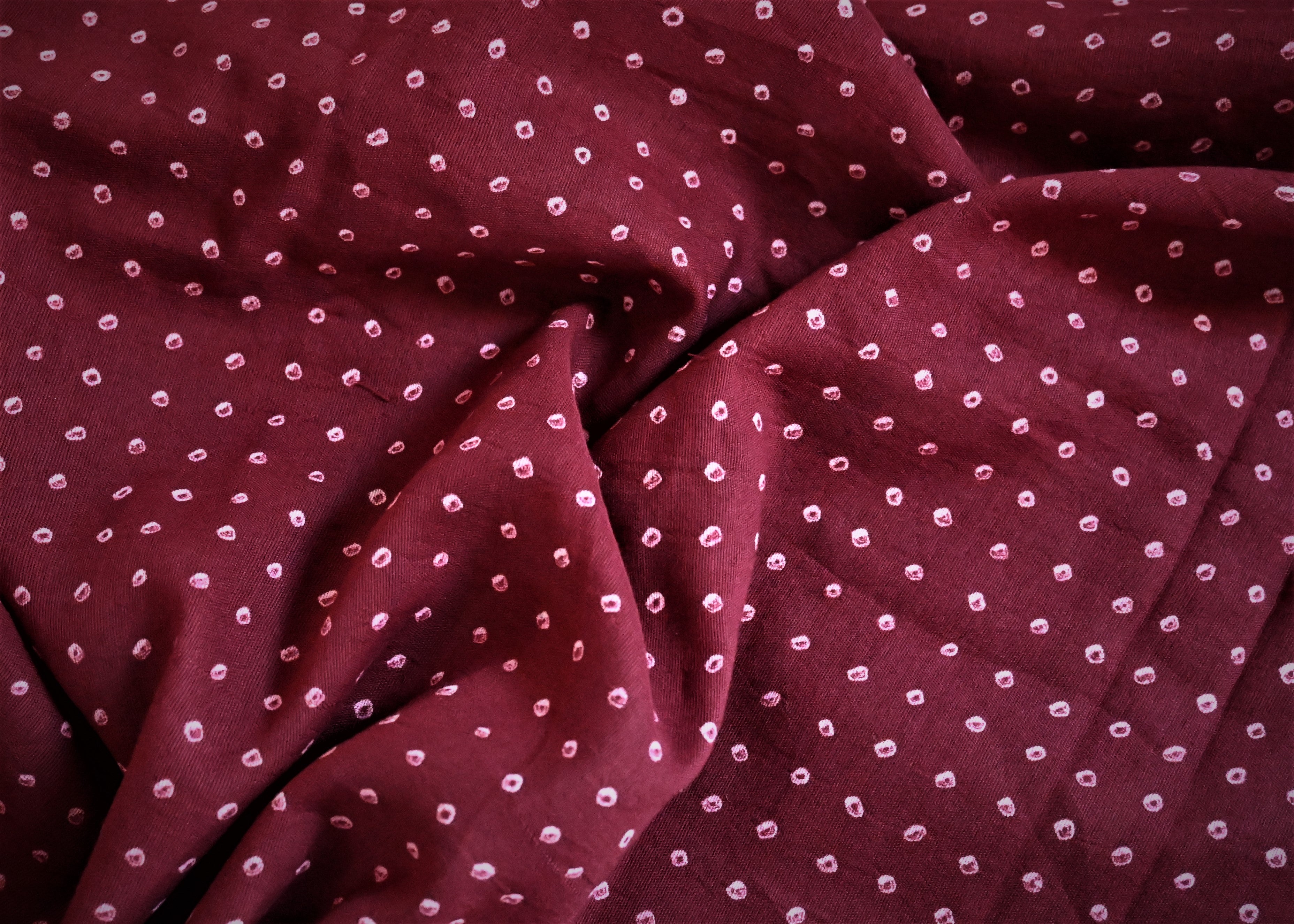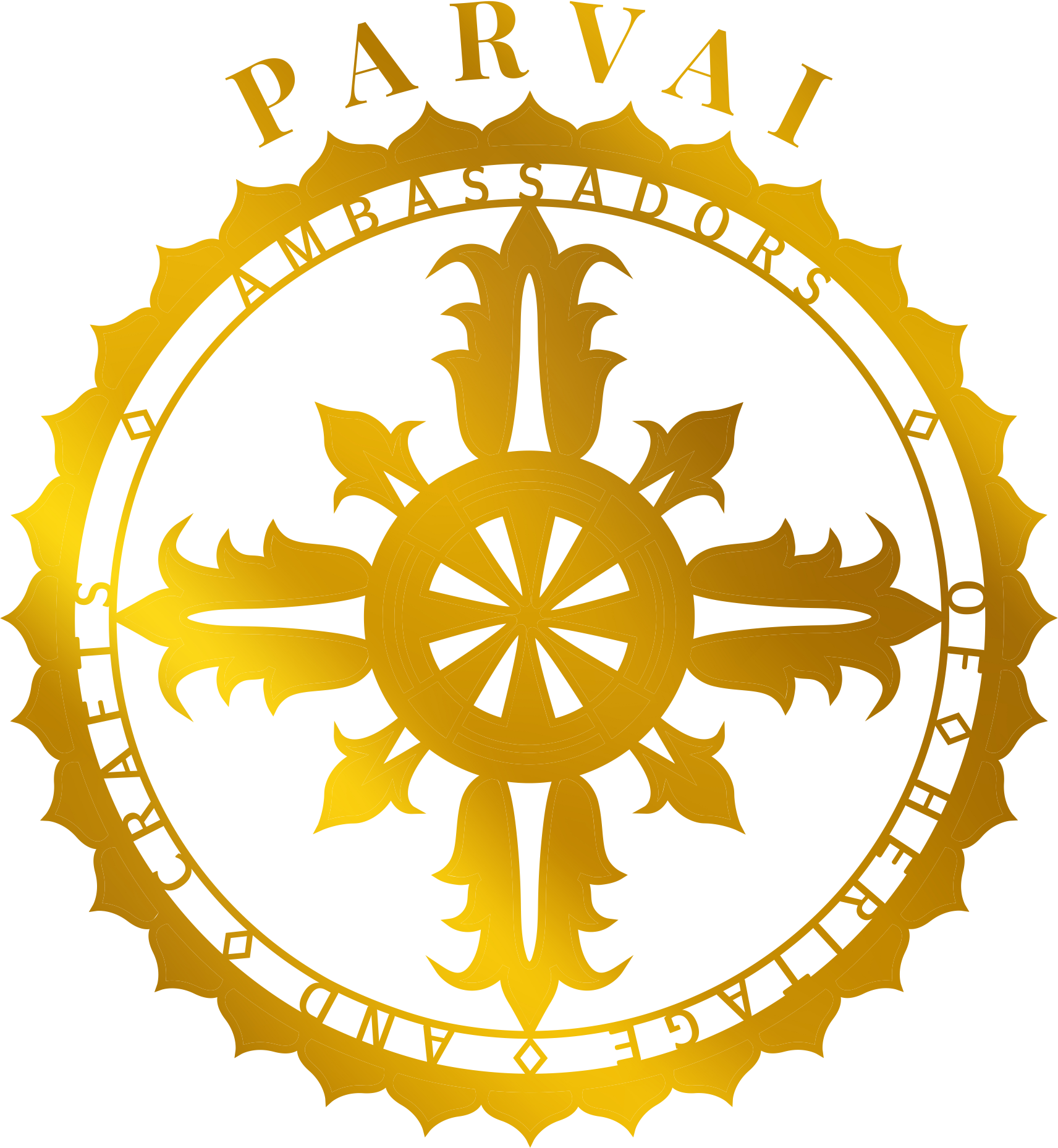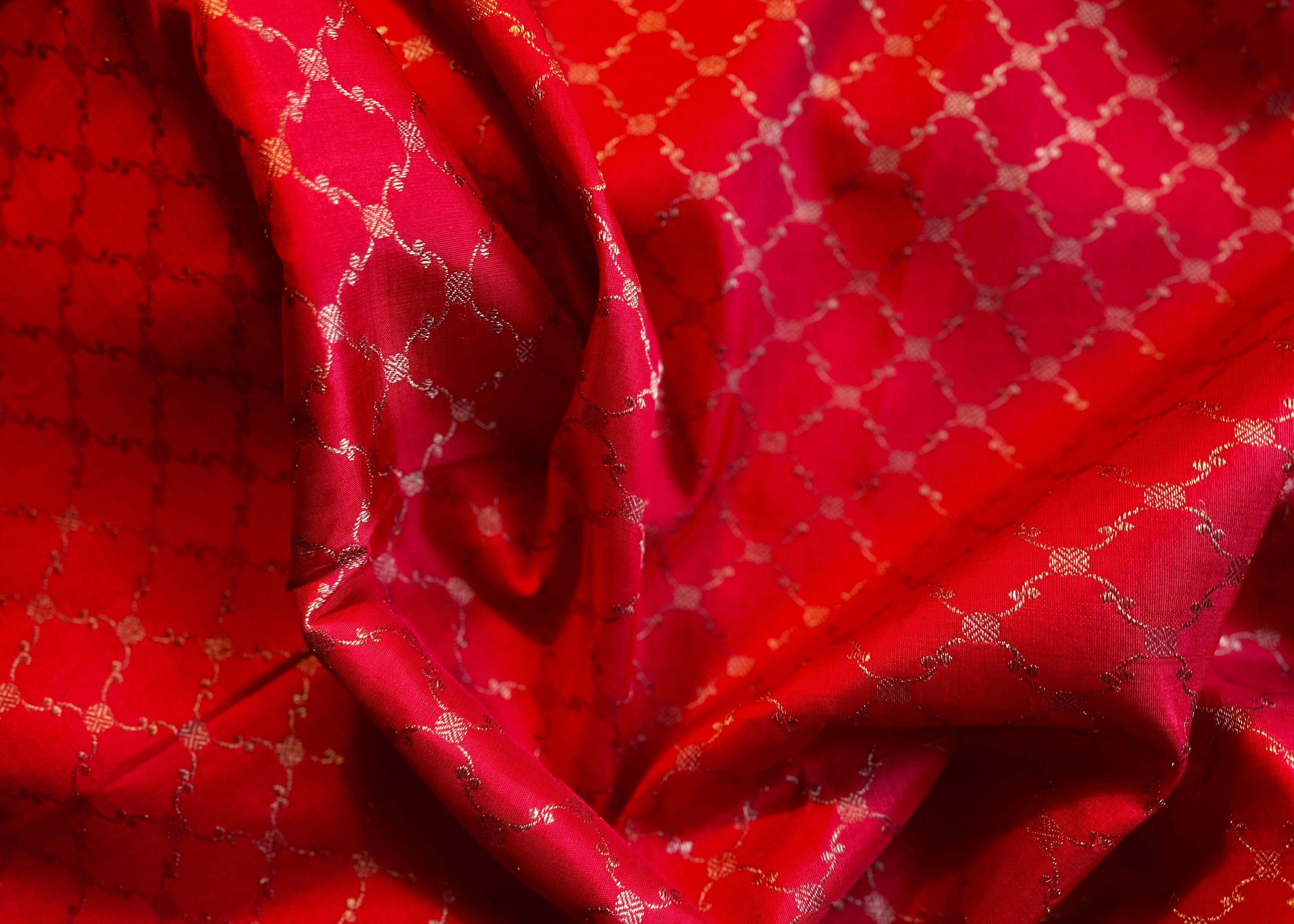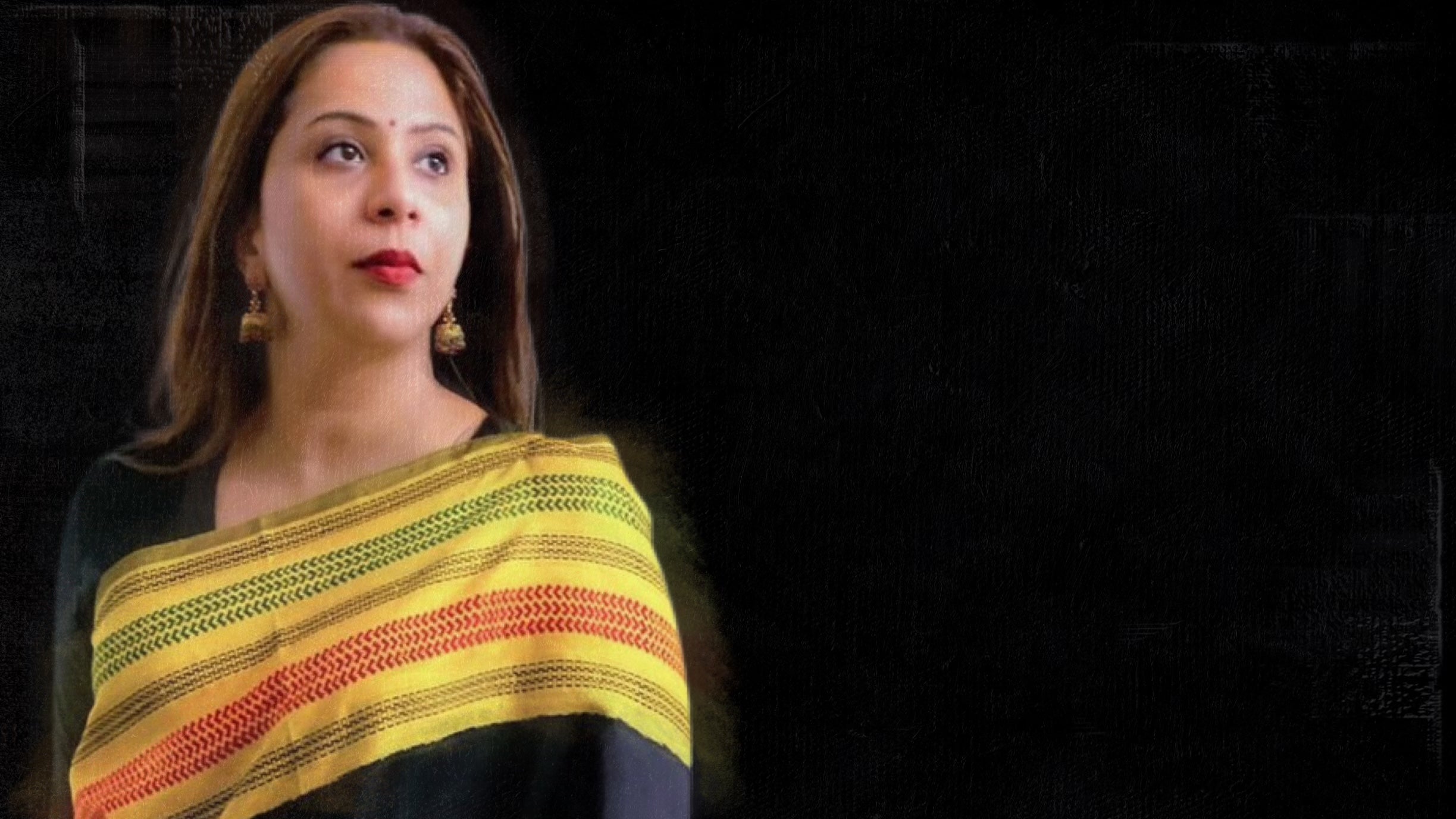
WE DREAMT A DREAM
Bandhavun is a story of our love for hand-tied and dyed garments. Popularly called Bandhani/bandhini in the north and Sungudi in the south - these tie & dye sarees have such beautiful history. One of the earliest forms of resist dyeing, where threads are used to tie knots to resist the dye from penetrating, bandhej is such a beautiful way to accessorise the woven fabric.
But is there a spiritual meaning to this craft? Can we be fully assimilated in something and still retain our individuality like the knotted fabric? Can we immerse ourselves in something and yet choose which pigments to pick up and which not to? Can this craft teach us life lessons? Well perhaps yes, the simplest of art forms can teach us the loftiest lessons. And on that note, we share our ode to tie & dye on pure cotton.
The Bandhavun Journey
We dreamt a dream. The dream was to recreate a very old, well worn, natural dye Sungudi saree that we had seen a while back. While the saree was several decades old, the saree had a certain integrity about it - bold, simple, functional and a work horse of a saree - after all, sungudis were built to last. Cotton sarees like Sungudis especially were worn extensively - at first outside for temple visits & market visits. As the saree started to show signs of wear & tear, the sarees would be worn indoor for housework and eventually repurposed into wash-cloths. Sustainability was after all was not a fashion, but a way of life, back then.
Our vision was to recreate the magic of these sarees - as authentically as possible. We were fortunate enough to source organic cotton yarn from @ethicus. The 80x100 cotton yarn was then woven into sarees using pure zari at our looms in Kanchipuram. One can say this is an authentic Kanchi cotton saree with pure zari. We used the traditional retta petu rudraksham motifs to give it a classic look.
Once our sarees were ready, we started looking for artisans in Madurai to help us recreate the authentic sungudi Kai-kattu or hand-tied knots. However, despite our best efforts, we were unable to find artists who were willing to work on the densely woven kanchi cotton saree. Due to the lack of enough patronage, the craft had almost perished and only a handful of people still practised the craft. And even they were unwilling to work on a single layer tie & dye. Our vision for this saree was 20,000 individual knots - not double or triple layer as is the practice today.
However, destiny had grander plans for us. We met Jabbar Khatri and his wonderful team who were happy to take on this project. The result is this spectacular range of sarees, that is an epitome of craft excellence - organic cotton, pure zari, Kanchipuram cotton saree with 20,000 single layer hand-tied bandhani knots that give the saree. Contrast borders that remind us of kattu sayam add to the nostalgia. Delicate knots lay scattered all over the saree like the stars on the night sky, twinkling away!
We are grateful to the universe for constantly leading us to the right people, empowering us with the right vision to stand our ground and do things the way we feel is right!
BANDHAVUN – CRAFT EXCELLENCE AT ITS BEST
Craft excellence does not happen overnight. A craft grows and evolves over centuries and it takes many generations of craftsmen to hone & perfect a craft. What starts off as a hobby becomes a cultural identity. That is what art does - art starts off as a past time and one day becomes one with the people and people begin to draw their identity from the very art. We associate crafts, art, architecture and food with people that at some point of time, they become their very identity.
It takes several generations of artists to perfect the craft for it to reach its pinnacle. Sadly enough, what we are witnessing today, is the downfall of art forms due to lack of patronage. One might argue that we still buy these art forms, support craftsmen, wear sarees and purchase artefacts. But when one shifts one’s lens from being a consumer to being a patron of the art, one starts to view a saree as something more than a covetable piece of clothing. Move from seasonal fads & fashion trends and start looking at clothes as efforts to contribute to art excellence by encouraging only the highest form of craftsmanship. This also results in rewarding the artist appropriately for their effort. Being an art patron means making these hard choices - encouraging artists to give you their best and not settling for anything less. And when they do, be ready to choose less, but pick quality over quantity.
The story of Bandhavun is one of craft excellence. It is the story of when we refused to settle for anything but the best.

Testing & Learning
When we spent a year testing fabrics, yarns and knot patterns - encouraging and convincing artists to try single layer knots on thick 80x100 organic cotton sarees. Our inspiration of course was an old, well worn original Sungudi and we wanted to recreate the drama of the art. Finding no artist willing to take on this project in Madurai, we reached out to the masters of this craft. And thus came about this beautiful batch of sarees that reflect the best of north and south. They have been made by master craftsmen who truly understand and breathe craft excellence. Every saree is a testament to our spirit and the those of the artists.
The knotting for sarees is typically done by women. These women work from the comfort of their homes and finish these projects while balancing their domestic duties. Think of this as a past time that also helps them generate some money. While design, logistics and dyeing is done by men, the actual tying of knots is always done by women - for they have nimble fingers and work tirelessly and patiently. Tying knots is a time-consuming process and requires a lot of practice to get the strength and accuracy. Women do this for years slowly learning the nuances of how different fabrics and designs are tackled. There is no school that teaches this, but it is a skill passed from one woman to another. The fact that this culture and tradition has been passed from one generation to another gives us goosebumps.
FROM VAIGAI TO SINDHU
Located on the banks of River Vaigai, Madurai has been one of the oldest & major settlement for two millennia and has a documented history of more than 2500 years. It is attributed as the cultural capital of Tamil Nadu and people say the city literally does not sleep. According to Historians, Madurai has been inhabited since at least the 3rd century BCE .

The city is believed to be of significant antiquity and has been ruled, at different times, by the Pandyas, Cholas, Madurai Sultanate, Vijayanagar Empire, Madurai Nayaks, Carnatic kingdom, and the British East India Company British Raj. The city is soaked it culture & art and hence, it does not come as a surprise that the city had developed its distinct identity with Sungudis.
If one were to take a road trip from Madurai to Rameshwaram, the change in landscape is just beautiful. As one crosses the vaigai belt the rich paddy fields are quickly replaced by arid dessert plants and shrubberies. Ask any old person what it was like to live in this part of the world back before electricity powered the nation and they would recollect the beautiful blue sky that would come alive with stars at night. In fact, folklore has it that the star-lit night sky served as the earliest inspiration for sungudi artists.

At Parvai, one of our vision is to restore craft to its original glory. And our ode to this craft was through this series of hand-made, hand-woven, hand-tied sarees. Before we knew it, we began chasing the dream of creating 20,000 stars on our sarees. And that’s how beautifully art works in mysterious ways, providing inspiration and the power to bring these inspirations to life!
Before we embark on a project, we ask ourselves what do we want to achieve and what are the most important parameters for the success of the project. This allows us a chance to decide where we can make compromises and where we can’t.
In the case of this project, we wanted to create a high-quality cotton saree with pure zari. The saree had to be embellished with 20,000 knots in tie & dye technique (like the stars in the sky). We did not want to fold the saree in 2 or 4 to achieve the same as is the norm these days - the saree has to have 20,000 individual knots - no compromises here.

We were able to procure 80x100 organic cotton yarn from Ethicus and have these sarees woven in our looms in Kanchipuram. The result was a sturdy, well-constructed, pure zari cotton saree. Finding an artist to work on our 20,000 knots was no easy task but we are blessed to be associated with Mr Jabbar Khatri whose team of ladies have worked their magic with the knots. The color combinations for the sarees were simple, traditional combinations - something we have all grown up seeing around us.
This whole project started with us wanting to replicate an old saree. Nostalgia is indeed very powerful. We constantly seek to recreate precious memories after all, don’t we?
FROM VAIGAI TO SINDHU
At first glance, the saree looks simple enough, but don’t let the looks fool you. The sarees are first traced with designs by the design team. Even if it is simple straight dots, this tracing allows the ladies who tie the knots a guideline to achieve the straight, perfect lines. Bandhani tying is a household activity in Bhuj. There are talented artisans all over Bhuj in various villages and the knotting is usually done by women in their free-time. So the traced sarees are sent to the villages with the right artisans for them to proceed with the knotting. Mr Jabbar and his team have a time tested QC process to ensure the right kind of work is sent to the right artisans. The beauty of this process also is that is allows women in the rural areas a chance to earn an additional source of income in their free time without having to step out of their comfort zones. Once tied, the sarees come back to the studio where the knots are inspected for quality. The quality of knotting impacts the overall impact the end product has and hence this check is important. If the saree passes the test, the border of the saree is tied with plastic and rubber tubes to achieve a resist and the body is dipped in the dye. In the saree shown above, this would be an olive green. After this process, the saree’s body is tied to resist dyeing and now the border is given a dip in the dye to achieve the contrast border. This tie-dye process needs accuracy to achieve the fine contrast border we so love in these sarees. Once the saree is dried, the knots are removed and stretched. The saree is pressed and polished to restore it’s original texture. This whole process can take up to a month for every saree.
People are the backbone of everything we do. Our goal is for Parvai and the work we do to add value to the world of art & craft. We want to be able to make meaningful changes to the way the industry works so that artists & craftsmen can earn dignified salaries that helps them fulfil their needs, aspirations and dreams. Without that happening, people with the right skills will move on in search of greener pastures. We might produce more engineers at the cost of losing out on art skills that have been carefully passed from one generation to another for a few hundred years now. If we are not able to find a place for artists in our society - respect their work and pay them what is due, we have to be satisfied knowing art forms will perish and be replaced by machines & robots.
This thought is scary. Imagine living in a world devoid of art & artists! Which is why, Parvai chooses the clusters we work with very carefully. We do not want to work with clusters and partners that promote middlemen. We want to work directly with the weavers and artisans, document their work, build relationships with them, help find a global platform for their work, recognise them and acknowledge them. More importantly though, we want them to earn well, send their children to good schools, wear good clothes, live is good houses and be prosperous - so much so that someday, children will take to these crafts, make it their passion and not hobby.
When Mr Jabbar Khatri of @bhido.art connected with us, he mentioned his working model. It involves working with rural women who are skilled in this craft and yet can’t come and work in a studio. It’s amazing how the work we do helps bring positive impact to the rural community, especially women! Our cotton is woven in our looms in Kanchipuram and when we do that we not just find work for weavers but also the community that does the cotton warping. With cotton warping becoming rare in Kanchipuram, we are happy we able to add value to the lives of these people. We have miles to go & we will not rest till we do.
Which is why we believe we definitely need to know who made our clothes. Agree?
SUNGUDI : THE QUEST OF AUTHENTICITY
We have been upfront in admitting these saris while appearing like Sungudis, can’t be called Sungudis. Allow us to share a little anecdote about these saris though.
When our team visited Madurai to find Sungudi artists and weavers, our driver took us to many Sungudi units. When we could not find what we came looking for, we decided to proceed further south to Rameshwaram. Our driver cheered us up saying he would show us something special that evening. As we drove away, disappointed about not finding what we came for, we looked out of the window gazing at the changing landscapes. And as we saw the trees being replaced by shrubbery, the sun set and we witnessed the changing lights. At some point of time, our driver made a short detour into nowhere. We got out of our car and stood there enjoying the late evening breeze. He asked us to look up and boy, the sight blew our minds. The sky was just perfect that night - pristine & black with stars twinkling away magically. We gazed at the stars with wonder. This wasn’t a sight one could catch from any big city and yet even the world’s tallest skyscrapers & biggest lights were no match to the spectacular night sky!
And as we sat there staring at the star-lit sky, we could not help wonder about the phenomenal journey the Sungudi artists must have undertaken from their home to the hustling bustling city of Madurai. Did they miss their people? Their land? How easy was it for the community to assimilate with the new culture & life. And did the star-lit sky in fact serve as the only constant - even when everything around them changed? We couldn’t help recall how beautifully star-lit the night sky is in deserts - as if to compensate for the arid & hot mornings, the nights can get pleasant. And perhaps the stars were the earliest inspiration for Bandhanis & Sungudis.
We decided then & there that we had to take this project forward and create the sari we envisioned even if it can’t be called a Sungudi. And thus was born
The next time you wear a tie & dye garment, do stop to admire the patterns and the human hours invested into the whole process. Slow down, pause and enjoy!





1 comment
what a journey, next time when I look up the clear sky with those tiny million stars I will remember this journey of Sungadi.. Kudos to the entire team and best wishes for many more such journey <3
Vidhya
Leave a comment
This site is protected by hCaptcha and the hCaptcha Privacy Policy and Terms of Service apply.